Knights and chivalry of three centuries. Part of 11. Knights of Italy 1050-1350's.
Listening to the words, he owns himself,
But how can
Sift them, making his own words,
Elegant, not in vain;
In the wise he is honored
For the ease of a nice rewarded,
And he is indifferent
To ignoramuses and ignoramuses, and pride
For no reason
Do not indulge, but happen to him
Resolve to manifest - manifest it,
And everyone will glorify him.
(Canzone. Dante Alighieri)
Amazing things happen, people write on the "VO", no "Comedy Club" can not be compared. Well, for example, there was recently a pseudo-historical article written on the principle of "heard the ringing, and that is enough." And right there to her in the appendage appeared “harmful echo” in the form of the same comments. A certain “EXPL (simply EXPL)”, for example, wrote like this: “The knights had a general paragraph. It is our women fools who dream of a pryntsa on a white horse, and in fact, prynts traveled in armor and coped in need of them, so they had a hole in their leg on their armor so that urine flowed, and with ... and they were right in armor, and only in the evening, perhaps, they were somehow cleaned, although they definitely didn’t wash themselves, maybe they wiped themselves somehow. But not exactly washed. And imagine the horse pryntsa, ..., ..., and the horses bathed, only when the river was crossed. "
Knightly battle. Such is her age ... Julius Caesar was represented by an Italian artist from Naples. It is from there that the manuscript “Antique story Julius Caesar ", dated 1325 - 1350's. And this folio, containing many similar miniatures, is located in the British Library in London. The miniatures are made with skill, which is why this source can be considered to be not inferior in importance to the famous “Bible of Matsievsky”.
And I was especially touched by the “hole in the leg in the armor” (this is necessary, what kind of imagination does a person have ?!) so that urine can flow? To find at least one such armor with a "hole", by golly, this man would go down in history.
But not a single armor “with a hole in the leg” was found among the samples that have reached us. Some idiots of people of the past, such experts represent, by God. If he himself had mounted a horse, he would have relieved himself in his pants and ... would ride on him ... Just jumped! And I would have looked at him, how cool he would have been. And even in armor, all the more ... After all? “You don’t know for sure - be silent!” But no, I want for some reason to expose myself to ridicule in front of the whole world. That's just not clear why ...
Of course, this miniature goes beyond the chronological framework of the topic, but it is significant in the sense that it depicts the Italian soldiers of 985-987. and as you see, they are practically the same as the Franks, the Saxons, or the Vikings. It is located in the manuscript of the Vatican Apostolic Library.
Meanwhile, as people at all times, and even know and even more so, sought to live with comfort and comfort. The Europeans adopted a lot in the East during the Crusades, so with all, let's say, the peculiarities of medieval culture, so primitive to represent it, means only to demonstrate one’s complete ignorance. Or the social order: "They are all bad now and were the same in the past."
But this topic is for a separate article and not one, with the involvement of a solid source base. It should only be emphasized here that culture especially quickly developed in the Middle Ages where its centers from the times of Roman rule remained, that is, in Byzantium, which remained after 457, like an island of civilization in the middle of a raging sea of barbarian tribes, and ... in Rome itself. Yes, he fell, but ... handed over to his murderers both the Christian religion and Latin, and later the famous Roman law, which formed the basis of the legislation of almost all the barbaric kingdoms of Europe.
The Sicilian Book in Honor of Augustus, 1194-1196 (Civic Library of the City of Bern). Very traditional, though not very high-quality images of warriors in hauberks and dome-shaped helmets.
It so happened that it was Italy that was at the crossroads of trade routes, which went into the Middle Ages from Asia to Europe across the Mediterranean Sea, and its natural conditions contributed to the development of wine and oil-making, which were very important in the Middle Ages.
Surprisingly, many miniatures of Italian manuscripts are illustrated with miniatures of very poor quality. You can even say something reminiscent of modern children's drawings. Here, for example, two illustrations from the Rustik Pizansky manuscript, which depict knights fighting. It was written in Genoa around 1225-1275, and is located in France, in the National Library in Paris. Isn't it pretty funny pictures? What is the first, what is the second ...
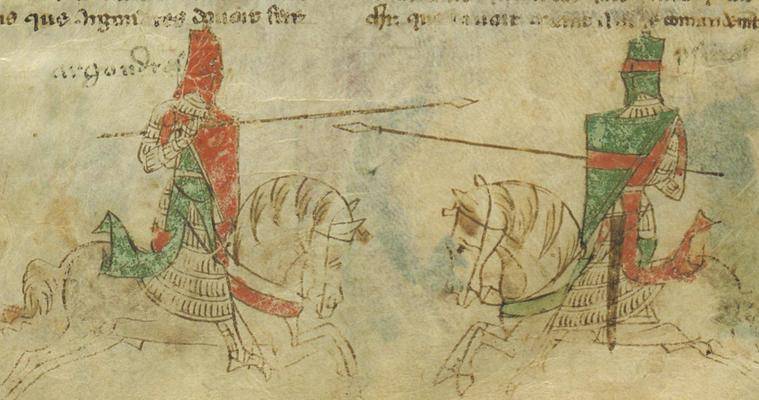
You might think (if you look at the whole book) that the illustrator no longer had any other colors besides red and green! But the details of the armor are drawn very clearly!
In the past materials of our "knight series" it was about knights and chivalry of the Holy Roman Empire. And Italy was just a part of it at that time, although it always kept aloof. As part of the empire, the Kingdom of Italy then included the entire Italian state north of Abruzzi, as well as part of Campagna south of Rome. Its northern borders were about the same as those of modern Italy, with the exception of the northern parts of Trentino and Trieste. Venice also lay outside the empire and "Italy" was not. By the middle of the XIV century, the papal state, consisting of Rome, Lazio, Umbria, Spoleto, Marches and most of Emilia-Romagna, also withdrew from the Holy Roman Empire.
It can be said that three main themes dominate the history of northern and central Italy from the eleventh through fourteenth centuries. First of all, it is the decline of imperial feudal power, the transformation of cities into centers of economic and political power, centers of "power and war" (for example, the wars of the Lombard League and the League of Verona), and the growing territorial power of the papacy, which eventually led to political struggle dad and emperor. It went through various phases, ranging from the struggle for investiture (1075-1220) and the German invasions in the XII and XIII centuries, and to the rivalry between the Guelphs and Ghibellins - by the pro-imperial and pro-imperial factions in Italy itself. And at the beginning of the XIV century, the papacy went to the "Babylonian exile" in the city of Avignon on the border between France and the Imperial kingdom of Arles, where it remained until the 1377 year.
Another illustration in the same style from the novel in prose "The novel about Tristan", 1275-1325. Genoa, Italy (British Library, London) Pay attention to the "winged" tips of copies. That is, all this time they were still running!
Although the Kingdom of Italy of the 11th century theoretically consisted of a relatively small number of duchies, marches, and similar units, in fact the country was extremely fragmented and full of castles built at almost all levels of local government. Feudal military obligations to the distant German emperor were largely formal, while most Italian cities already came out of feudal control, and became either directly accountable to the emperor himself, or to local church authorities. On the other hand, whoever did not come to fight in the Italic limits, starting with the Byzantines and Arabs, and ending with the Vikings and the Hungarians. As a result, military business in the Italic lands was booming, and in the cavalry tactics of its riders, from the 9th century, the spear was already noticed.
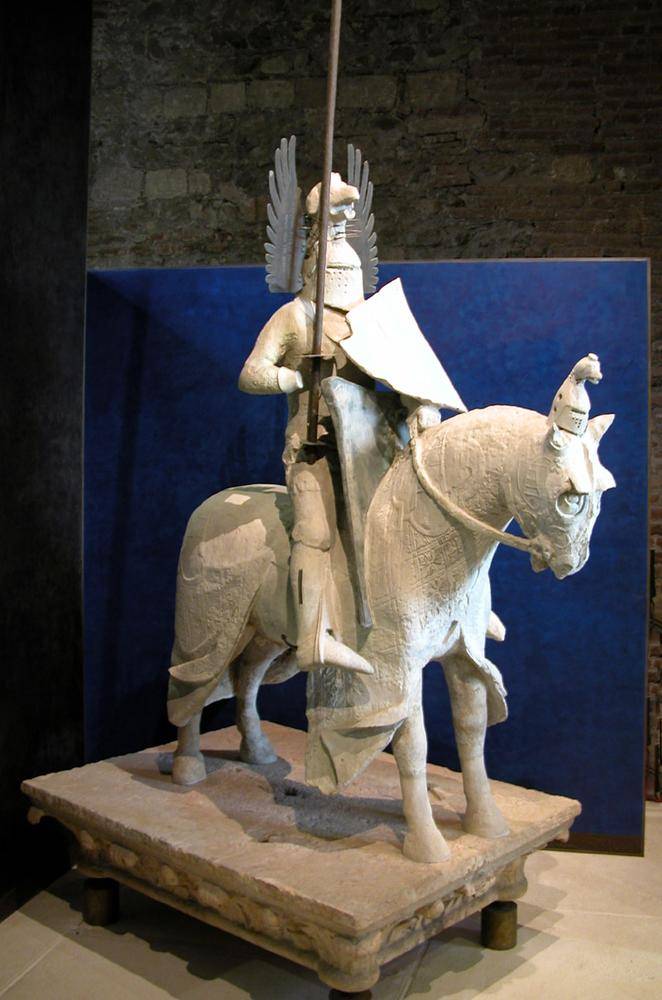
Now let's turn to the sculpture. Here, for example, the effigy of Mastino II della Scala - Podonesta of Verona, on his sarcophagus, 1351. He was buried in the Gothic mausoleum near the church of Santa Maria Antica, in one of the famous tombs of Scaligers - Arch Mastino II.
The decline of feudal relations in rural areas continued throughout the 12th and 13th centuries, with the cities extending their power to the territory adjacent to them all this time. As a result, peculiar agglomerations arose in Italy, in which cities were sources of income, and rural areas a source of food, and hired personnel. Widespread in the conditions of development of commodity-money relations has become a mercenary. Horsemen and infantrymen were recruited for military service both in the cities and from the countryside, although the most well-armed infantry, apparently, was still urban. This was more characteristic of Lombardy and Tuscany than in the rest of central Italy, where the old feudal relations remained somewhat longer. In the papal state, mercenaries also appeared very early.
Bas-relief depicting Gilelmo Berardi da Narbona, 1289 Basilica of St. Annusatiat, Florence, Tuscany, Italy. What is he good at? Yes, the fact that in the smallest detail conveys the features of equestrian weapons, which had spread in Italy at the end of the XIII century. He is wearing a typical helmet-cap comforter (servilera or bascinet of an early form), in his left hand there is a “shield-iron” with a stamped image. Surcoat embroidered with images of lilies, but only on the chest. Apparently, to embroider it all entirely seemed to NMA too expensive. The legs are covered with patch panels of “boiled leather” with embossed images. Interestingly, he has a dagger on his side. Enough rare addition to the sword at this time, which has become common only in the next century.
Discipline in the militias of the northern Italian cities was so high that it became a completely new phenomenon in the medieval Western European war, as well as the level of interaction between cavalry and infantry. Only in the states of the Crusaders in the East could one see something comparable, and, of course, many examples could be found in military affairs of Byzantium or Islamic states.
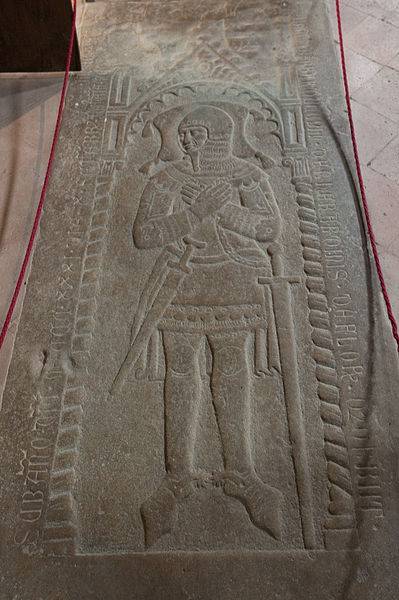
Tombstone of Gerardukio Gerardini, 1331). Church of Pieve di Sant'Appiano, Barberino Val d'Elsa, Tuscany, Italy. As you can see, the image on the board is perfectly preserved. All the details are visible, starting from the nose plate - bretash, chains, going to the handles of the sword and the dagger of basilards, not inferior in size to another sword!
However, throughout the XIII century, it was the cavalry that remained the main offensive element in the field battle, while the infantry, even in open battle, still played a supporting role and served as its reinforcement. New is the very wide distribution of crossbows and equestrian crossbowmen, who rode with their knightly cavalry, but dismounted for battle. The spread of the crossbow in the infantry made this branch of arms very popular outside and outside of Italy. At the beginning of the XIV century, one of the very important events of this time was the emergence of not only individual mercenaries, but also entire hired "gangs" or "companies". These were the famous condottieri, who fought both in Italy and abroad. Moreover, such “companies” included both cavalry and infantry.
The well-established trade of the cities of Italy with the eastern Mediterranean also contributed to the more rapid development and introduction of such “modern” combat mechanisms, such as various gravitational-driven throwing machines (frondibola), and, of course, the first firearms weapons.
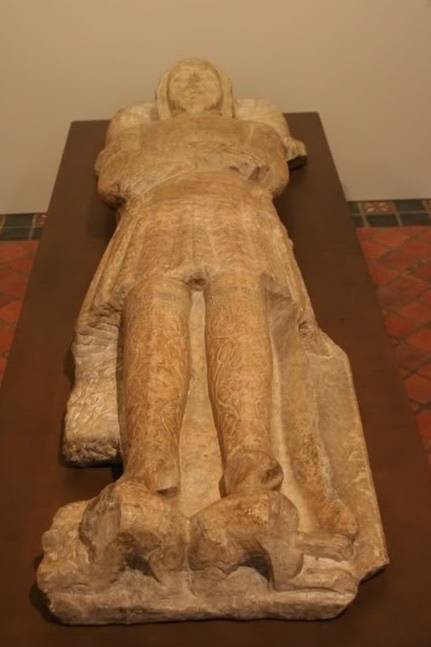
But this effigiya unknown knight, who belonged to the German family of Angald, and dating back to about 1350, (Detroit Institute of Arts, Michigan, USA). Why is she so interesting? But what is the perfect execution of the details of his armor and, above all, of leather overlaid plates superimposed on his mail Shossa and Hauberk.
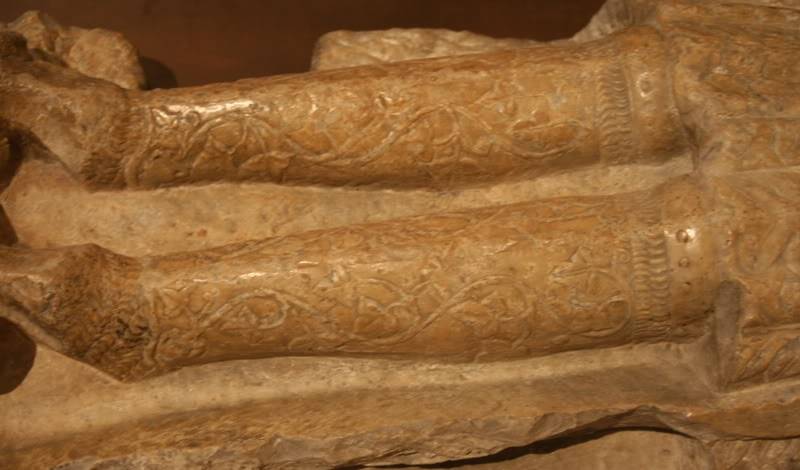
Plate greaves.
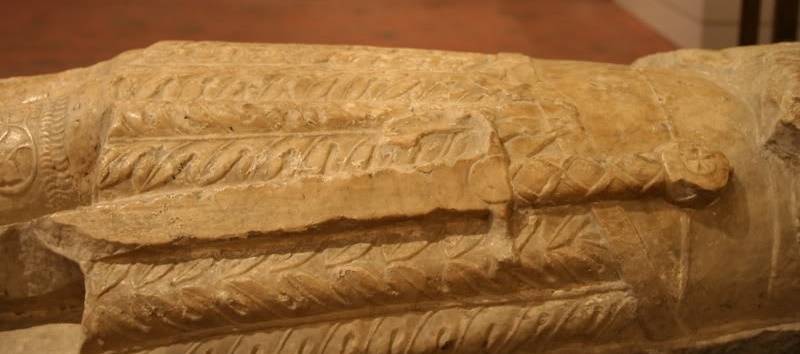
The handle of the sword with the characteristic shields of the cross, which protected the sheath from water, and the cross on the disk top.
At the end of the XIII and XIV centuries, the growing welfare of cities led, on the one hand, to the intensification of serf construction, and on the other, to a change in tactics of military operations. Now the main forms of war were the siege of cities and the devastation of enemy territory, with a relatively small number of full-scale battles. Under these conditions, the professionalism of the knighthood (and the “bandits”, members of the mercenary gangs) was continuously increased, which means that the value of each individual knight grew, and their armor was also improved. And it is not surprising that they became more and more complex, ergonomic, and provided excellent protection while maintaining freedom of movement.
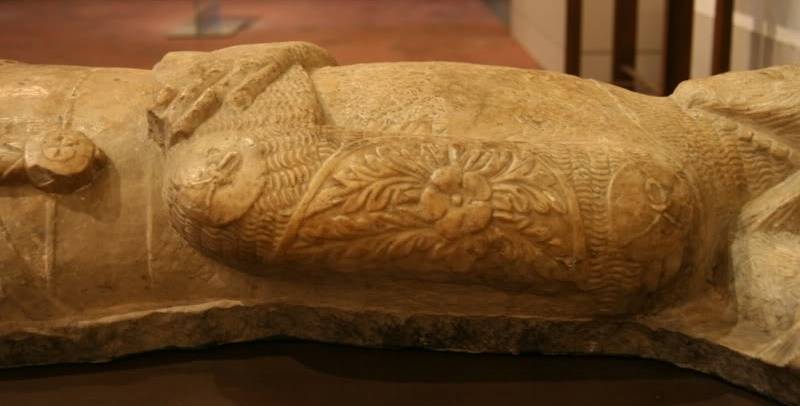
On the elbows and shoulders - discs on the strings, but the shoulder closes the "boiled leather" with embossed patterns in the form of leaves and flowers.
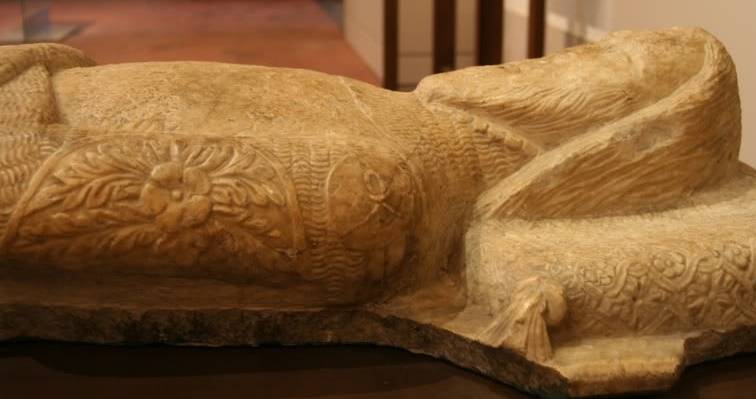
Interestingly, the exact same pattern is reproduced on the pillow ...
At the same time, in order to somehow emphasize their wealth and not to overload themselves with “iron”, the Italian knights introduced the fashion for wearing overlayed mail armor overlay details of “boiled leather” with an embossed pattern, and also gold plated! British historians point out that “boiled-leather” armor may indicate the presence of Byzantine or Islamic military influence, exercised primarily through southern Italy.
The infantry in Italy acquired particular importance at the beginning of the XIV century, but then its role again decreased, since now its fame has passed to the Swiss.
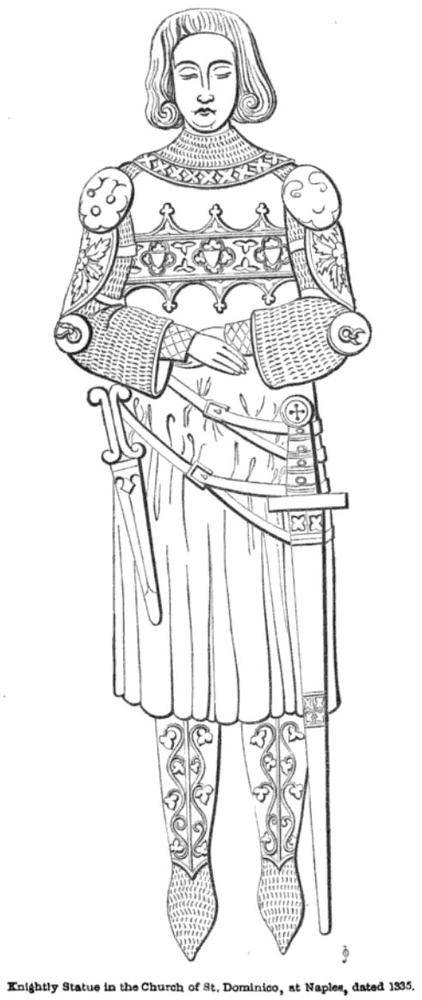
Thomas Buldanus's Effigia (1335) from the Church of San Dominico Maggiore in Naples. That is, similar equipment in Italy of this time was quite massive. Here is its graphical drawing, which allows a good view of all its details.
Well, an indicator of rapid technical, as, indeed, the social development of Italy, was the early use of firearms. The earliest, but far from clear, mention of him came from Florence in 1326, then from Friuli in 1331, and finally more accurate, from Lucca to 1341. Although there is information about its use in Forli in the 1284 year, that's just what it was, from him is not entirely clear. Bombards and field guns were common even in such an isolated mountainous region as Savoie, and in many other backward regions of the country, such as, for example, the papal states.
Использованная литература:
1. Nicolle, D. Italian Medieval Armies 1000 – 1300. Oxford: Osprey (Men-at-Arms # XXNX), 376.
2. Nicolle, D. Arms and Armor of the Crusading Era, 1050 - 1350. UK L .: Greenhill Books. Vol. 1.
3.Oakeshott, E. The Archeology of Weapons. Arms and Armor from Prehistory to the Age of Chivalry. L .: The Boydell Press, 1999.
4.Edge, D., Paddock, JM Arms and armor of the medieval knight. An illustrated history of Weaponry in middle ages. Avenel, New Jersey, 1996.
5. Held, Robert. Arms and Armor Annual. Volume 1. Northfield, USA. Illinois, 1973.
To be continued ...
- Vyacheslav Shpakovsky
- Knights and chivalry of three centuries. Part of 10. Knights of the Kingdom of Arelat
Knights and chivalry of three centuries. Part of 9. Germanic effigii
Knights and chivalry of three centuries. Part of 8. Knights of the Holy Roman Empire
Knights and chivalry of three centuries. Part of 7. Knights of Spain: Leon, Castile and Portugal
Knights and chivalry of three centuries. Knights of Spain: Aragon, Navarre and Catalonia (part 6)
Knights and chivalry of three centuries. CH 5. Knights of France. Central and southern areas
Knights and chivalry of three centuries. Knights of Ireland (part 4)
Knights and chivalry of three centuries. Knights of Scotland (part 3)
Knights and chivalry of three centuries. Knighthood and knights of England and Wales. Part of 2
Knights and chivalry of three centuries. Knighthood and knights of northern France. Part of 1
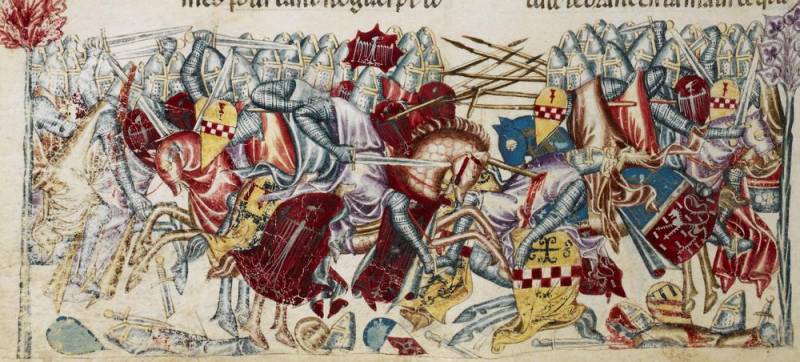
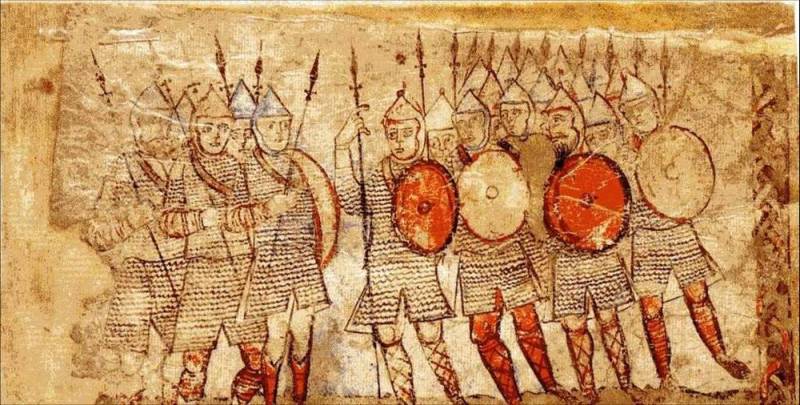
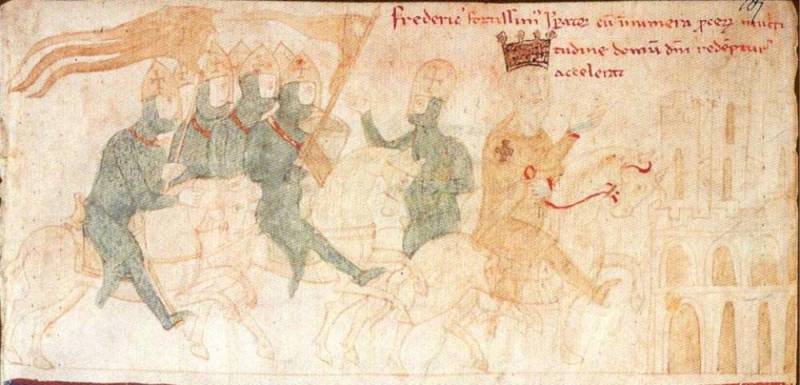
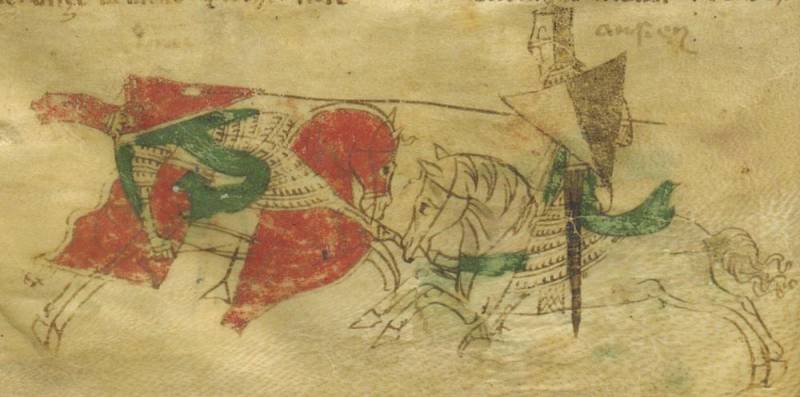
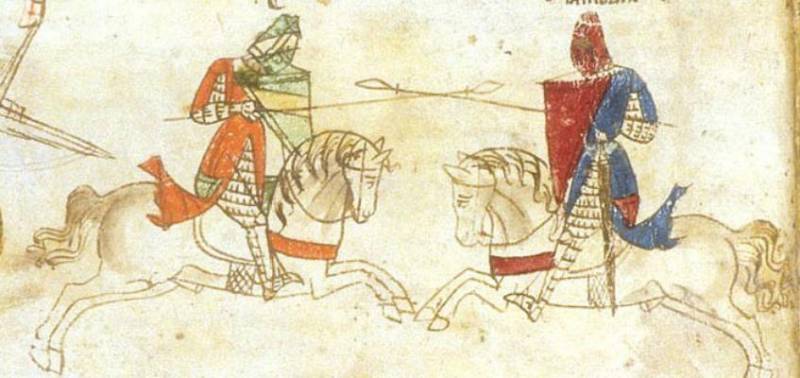
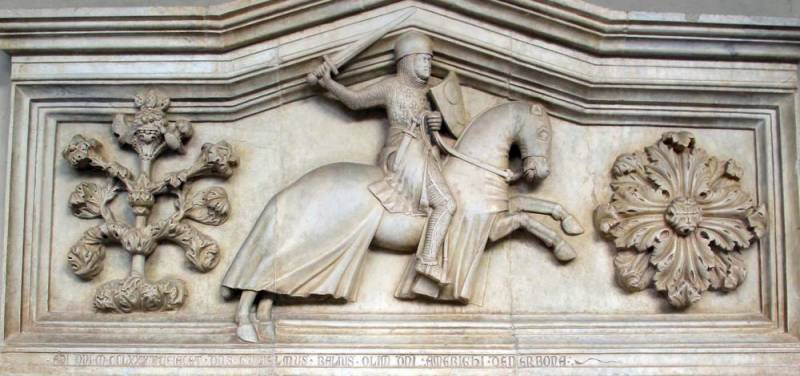
Information